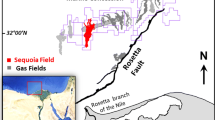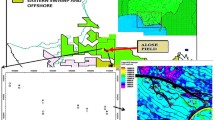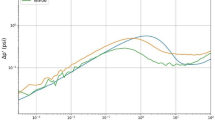Abstract
Among all of the energy resources, oil is the most widely used primary energy source. Oil reservoirs need to be characterized accurately for effective field development purposes. Typically, available field data in the reservoir characterization stage may include seismic surveys, well logs, core analysis data and field production history. One of the challenges for reservoir engineers is to utilize various types of data collected in different scopes to characterize the reservoir and propose optimized development strategies. Numerical reservoir simulation is one of the most broadly implemented approaches to quantitatively evaluate a field development plan. However, establishing a decent reservoir simulation model requires rigorous conversions from the raw field data to structural maps and spatial petrophysical property distributions as input parameters. History matching needs to be carried out to tune the property distributions to match numerical model predictions to field histories. The conventional reservoir characterization and field development workflow could be time and labor intensive. This keynote lecture presents the development of artificial-neural-network based expert systems which effectively correlate seismic survey data, well log data and field production history. When compared against the conventional reservoir characterization and field development optimization protocols, the developed expert system can provide much more rapid predictions than conventional reservoir simulators.
Access provided by Autonomous University of Puebla. Download conference paper PDF
Similar content being viewed by others
Keywords
- Artificial neural network
- Infill drilling
- Reservoir characterization
- Sweet-spot identification
- Reservoir management
1 Introduction
The bursting developments of big data and soft computing technologies introduce innovative insights into the petroleum and natural gas industry. Artificial Neural Network (ANN) methodology is considered to be a powerful data-driven approach for its fast-computational speed and strong generalization capabilities. ANN has been broadly employed as a robust alternative approach to overcome the following difficulties that are faced in high-fidelity reservoir simulation studies and other conventional reservoir engineering tools:
-
1.
The process of converting the raw field data including seismic data, well logs, core data, laboratory fluid sample measurements to input data for high-fidelity simulation models can be laborious and time intensive and may introduce significant uncertainties (scaling-up issues).
-
2.
Establishing a decent reservoir simulation model requires tuning of a number of parameters. For instance, a grid block sensitivity analysis needs to be conducted to eliminate the effect of grid size on the simulation results. To make a meaningful prediction, the spatial reservoir properties need to be tuned to match the history by a history-matching study (inverse simulation). Both grid sensitivity analysis and history-matching workflows may require a large number of simulation runs to be conducted, but results will still have a good degree of uncertainty.
-
3.
As more complex physical, thermodynamical and chemical phenomena if they are understood correctly and then incorporated into the governing equations, the computational overhead of the numerical simulation rapidly rises, potentially making the simulation study prohibitively time and energy intensive.
Within the petroleum industry, research interests have considerably increased for developing ANN models to solve reservoir engineering problems, especially when the existing complex relationships are vaguely understood. ANN models act as robust multi-dimensional predictors and classification tools in solving reservoir engineering problems. Training ANN models utilizes synthetic data generated from high fidelity simulation models, real data collected from field operations or laboratory data measured as part of experimental investigations. Such knowledgebase can be categorized into three critical elements that are involved in reservoir engineering studies: reservoir rock/fluid properties, engineering design parameters and nature of the field response data. A subset of data needs to be isolated from training data for a blind testing purpose. A developed ANN model needs to be validated by comparing the predictions against the actual data of the blind testing dataset. As new data become available, ANN model can be re-trained using the enriched training data to improve the generalization capability.
Training an expert ANN model is challenging because the available field data can be limited, which can make the pattern indistinct for ANN models to learn. Moreover, the scope of the problem could be large, especially when the seismic attributes and well log signatures are included as inputs or outputs. Therefore, the size of weight matrices connecting the hidden layers of the ANN model could be extremely large, which in turn increase the computational overhead of training. Therefore, a robust ANN model with optimized architecture needs to be developed.
The prediction performance of an artificial neural network model strongly depends on the network architecture. The number of hidden layers, the number of hidden neurons in each layer and the type of the transfer function applied on each hidden layer are key parameters of a typical neural network architecture. Finding the optimum neural network architecture could be challenging because of the existence of many combinations for a number of hidden neurons, number of hidden layers of each hidden layer and transfer functions. Therefore, determining the ANN architecture by manually changing these three parameters is not feasible most of the time. To address these issues, a parallel processing workflow can be employed to optimize the topology of the network models. The overall idea of the workflow will be randomly generating a large number of neural network architectures. With the help of the power of parallel processing, multiple trainings on different ANN architectures can be processed synchronously. This workflow not only tests big numbers of ANN architectures to find the optimum design, but also saves plenty of execution time decreasing the computational footprint.
ANN applications in reservoir engineering include two categories of problems: universal applications and specific reservoir applications. ANN models are developed to serve as universal surrogate models for production forecasting, well testing applications, EOR screening, etc. Training universal ANN models utilizes synthetic data generated from high-fidelity simulation models. ANN models are trained to solve specific problems of a certain reservoir such as history matching and field development optimization. In this case, neural networks are trained using field data such as well logs, production history and seismic survey data. Under the two aforementioned categories, three classes of ANN models are developed, based on the objectives of the problems:
-
1.
A forward-looking model utilizes reservoir properties and engineering design parameters as input to predict the production performance (response function). Forward-looking ANN models are employed as production forecasting tools.
-
2.
An inverse history matching model utilizes production performance, such as production history (rate transient data), bottomhole pressure measurements (pressure transient data) and the corresponding project design parameters as inputs to predict the suitable reservoir rock and fluid properties. This type of ANN models are capable of solving reservoir engineering problems such as well testing applications and history matching problems.
-
3.
An inverse engineering design model predicts the required project design parameters by knowing the reservoir characteristics and the desired production performance. The inverse engineering design ANN models are typically deployed for project optimization such as designing an enhanced oil recovery process and designing optimum well completion strategies.
2 Case Study
As a case study in this paper, a reservoir characterization example by integrating the available field data, which include seismic survey, well logs, well tests, and core data was carried out. By the help of such integration, infill well locations can be determined. Numerical reservoir simulation is broadly implemented to provide quantitative assessments of a field development plan. However, establishing a decent high-fidelity numerical model requires rigorous conversions from the raw field data to structural maps and petrophysical property distributions as its inputs. More importantly, numerical models need to be tuned iteratively to match the production history, which could be extremely time consuming. Therefore, it is attractive to explore and develop an alternative approach (expert systems) which could replace the conventional reservoir characterization and field development optimization workflow. This case study discusses an artificial-neural-network based expert system which functions as a powerful characterization and field development decision-making tool for an oil field in North America, which utilizes seismic survey data, well log data and the field production histories. ANN technology is employed as a pattern recognition tool in an effort to comprehensively utilize the available field data and provide fast and accurate predictions for the purposes of reservoir characterization and field development strategies (infill drilling). To achieve the functionalities of the expert system, two sets of ANN tools can be developed. The first set of tools addresses the need for synthetic well logs. This tool set can generate various different types of synthetic well logs at any infill drilling location within the seismic boundaries. Moreover, synthetic logs for wells with complex architecture such as slanted wells and horizontal wells can be generated when a wellbore trajectory is specified. A second set of tools is devised to predict oil flow rates and cumulative oil production profiles at any desired location in the reservoir. ANN models developed in this work are validated by performing extensive blind tests. The testing results of the synthetic well log tool and the production performance tool show a good level of agreement with the field data. The expert systems devised in this study are capable to make fast evaluations on a field development plan or generate synthetic logs for the proposed infill drilling locations. Moreover, a forecasted productivity surface map can be generated by sweeping the entire field employing the developed expert systems. A process streamlined as discussed here provides critical information for the decision-making processes of infill drilling location selection.
3 Summary and Concluding Remarks
In this study, it is obvious that expert systems can be effectively trained and can yield more than promising validation performances as they are able to capture the existing physical, chemical and thermo-dynamical mechanisms and processes effectively. It still needs to be highlighted that such good performances, however, do not yield full endorsements to fully replace the conventional engineering methodologies such as deterministic and stochastic models with ANN-based models. However, the integrated use of ANN-based modeling together with the conventional computational formalisms can provide a higher level of confidence to the reservoir engineer and geoscientists in making critical decisions. As the field performance data brings in the actual signatures of the specific on-going processes (physical, chemical and/or thermodynamical), the opportunity to generate higher resolution and more accurate representations and results will make this class of data analytics and its tools even further attractive in the years to come.
Author information
Authors and Affiliations
Corresponding author
Editor information
Editors and Affiliations
Rights and permissions
Copyright information
© 2019 Springer Nature Switzerland AG
About this paper
Cite this paper
Ertekin, T., Sun, Q. (2019). Use of Artificial Intelligence in Determining the Location of Infill Wells in Hydrocarbon Exploration and Production Activities. In: Banerjee, S., Barati, R., Patil, S. (eds) Advances in Petroleum Engineering and Petroleum Geochemistry. CAJG 2018. Advances in Science, Technology & Innovation. Springer, Cham. https://doi.org/10.1007/978-3-030-01578-7_1
Download citation
DOI: https://doi.org/10.1007/978-3-030-01578-7_1
Published:
Publisher Name: Springer, Cham
Print ISBN: 978-3-030-01577-0
Online ISBN: 978-3-030-01578-7
eBook Packages: Earth and Environmental ScienceEarth and Environmental Science (R0)




